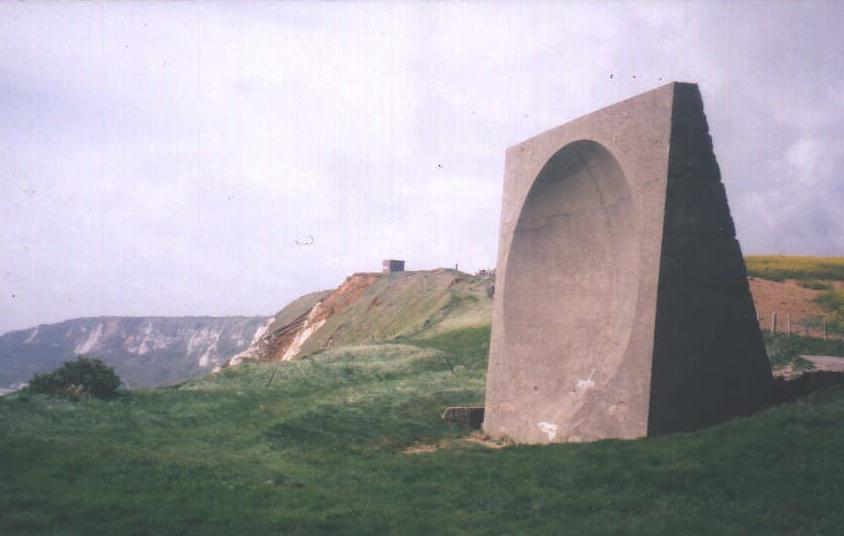It’s a bit cold outside — but not cold enough to make a sound mirror out of ice, which is what has been done in Alaska!

The mirror was created as part of the Freeze celebration of Alaska and life in the North
held in Anchorage during January 2009. It was designed by Klaus Mayer, Petra Sattler-Smith and Marisa Favretto, who were inspired to create the ice mirror by the British sound mirrors.
Sound Mirror is inspired by Northern states of change and flux in weather, environment, light and atmosphere. We are interested in emphasizing these juxtapositions, highlighting the states in nature that are significant to states of perception. We are interested in the work acting as a mirror to the elements – light, landscape, passing birds, planes, sounds, while creating a space/form specific to viewer interaction – via size, orientation, composition.
The form is inspired by sound mirrors – a form built around coastal towns in England between 1915 and 1930 to function as an acoustic radar for approaching war planes. The first one was carved out of the chalk cliff on the coast in 1915.
Source: Freeze project
Photographs of the mirror being built from blocks of ice.

The PDF explaining the initial design concept includes a photograph of the Abbot’s Cliff sound mirror near Folkestone.
The completed mirror was praised by Michelle Mitchell in The Freeze Art Show at a Healthy Ten Below at Scribbit:
The most beautiful of the exhibits was a sound mirror that must have been fifteen or sixteen feet high and was built from this gorgeous frosty blue ice that almost looked like it was resin rather than ice. The blocks fit perfectly together to form this giant slab with a concave center so that if you stood on the platform opposite and spoke toward the dish it would reflect your voice back at you.
Source: Scribbit 2009-01-12
There is also a picture of the finished installation on Flickr. Anyone got any more good pictures of it?





